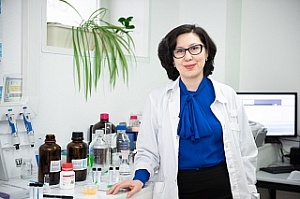Scientists at the TSU StrAU Institute of Smart Materials and Technologies have developed a new multilayer material for producing fuel elements of fast neutron nuclear reactors. The main competitive advantages of the product, which is made with a vanadium alloy, are high resistance to corrosion and radiation, along with ease of manufacture and subsequent processing.
- Fast neutron reactors are more efficient and safer than thermal neutron reactors, - explains Irina Kurzina, director of the Institute for Smart Materials and Technologies. At the same time, the radiation loads on the structures in them are much higher, which makes it necessary to use special materials for the reactor vessel and in-core systems. We have developed a new composite with special functional characteristics - high heat resistance and high resistance to static, dynamic, and radiation loads.
The composite is a three-layer material - chromium-containing steel/vanadium alloy/chromium-containing steel (X17H2/V-4.9Ti-4.8Cr/X17H2). Tests of radiation stability showed that the effect of heavy metal ions on this material does not lead to a significant change in its phase composition because the composite is corrosion and radiation resistant.
According to the developers, the use of a three-layer composite in nuclear reactor core products will ensure radiation and corrosion resistance of structures at ultra-high operating parameters - temperatures up to + 700 °C and damage rates of more than 150 displacements per atom in a closed nuclear fuel cycle. These characteristics are comparable with world analogs, and in some respects the Russian product is capable of surpassing them.
- The main area of application for which the material was developed is atomic energy, -says Irina Kurzina. - More narrowly, consumers of final products would be machine-building enterprises of the nuclear industry that are producing components for the nuclear power industry, and fuel cycle enterprises producing and/or processing nuclear fuel.
During the project, the scientists developed three patents and three advanced technologies that concern the method of obtaining samples, the method of studying the corrosion properties, and the method of modeling the neutron degradation of structural materials by exposure to heavy metal ions.

